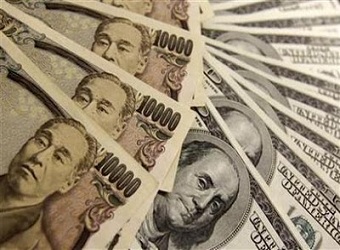The dollar prices eased against the yen on Wednesday, with the outlook clouded by worries that escalating U.S.-China trade tensions could exert a toll on the global economy and U.S. growth.
The dollar fell 0.1 percent to 106.50 yen, giving back some of the gains made on Tuesday, when it rose 0.6 percent against the Japanese currency.
The greenback gained on the yen the day before as risk appetite improved and Wall Street’s main indexes advanced, helping the U.S. currency stabilize after recent declines.
Considered a safe haven currency, the yen attracts demand in times of economic uncertainty and vice versa.
The outlook for the dollar remains clouded by global trade tensions.
The Trump administration on Tuesday raised the stakes in a growing trade showdown with China, announcing 25 percent tariffs on some 1,300 industrial technology, transport and medical products to try to force changes in Beijing’s intellectual property practices.
China’s Ministry of Commerce said it “will soon take measure of equal intensity and scale against U.S. goods.”
The persistent worries over global trade tensions are likely to weigh on thedollar against the yen, said Satoshi Okagawa, senior global markets analyst for Sumitomo Mitsui Banking Corporation in Singapore.
“The dollar will probably be weighed down, and a rise towards 108 yen seems unlikely,” Okagawa said.
At the same time, dollar-selling needs among Japanese players have abated now that Japan’s end-March financial year-end is out of the way, and that could limit the dollar’s downside risk, said Okagawa, who expects the U.S. currency to trade in a 104 yen to 108 yen range in the near term.
The dollar’s index against a basket of six major currencies fell 0.1 percent to 90.071. The euro edged up 0.1 percent to $1.2281.
Analysts say investors are also focused on U.S. payrolls data and comments by Federal Reserve Chairman Jerome Powell on Friday, which should help determine the dollar’s direction.
Speculation about the possibility of the Bank of Japan’s eventual exit from its aggressive monetary easing is also likely to support the yen, said Heng Koon How, head of markets strategy for United Overseas Bank (UOB) in Singapore.
“The Bank of Japan needs to do a lot more work convincing the market that yield curve control is still good and that there’s no adjustments around the horizon,” said Heng, adding that UOB’s forecast is for the dollar to be trading at 100 yen at the end of June.
BOJ Governor Haruhiko Kuroda had said on Tuesday that politics won’t get in the way of exiting ultra-loose monetary policy, signalling the BOJ’s resolve to whittle down stimulus when inflation hits its elusive 2 percent target.
The Australian dollar rose 0.4 percent to $0.7712, getting a boost after data showed a larger-than-expected rise in Australian retail sales in February.
Source: Reuters
